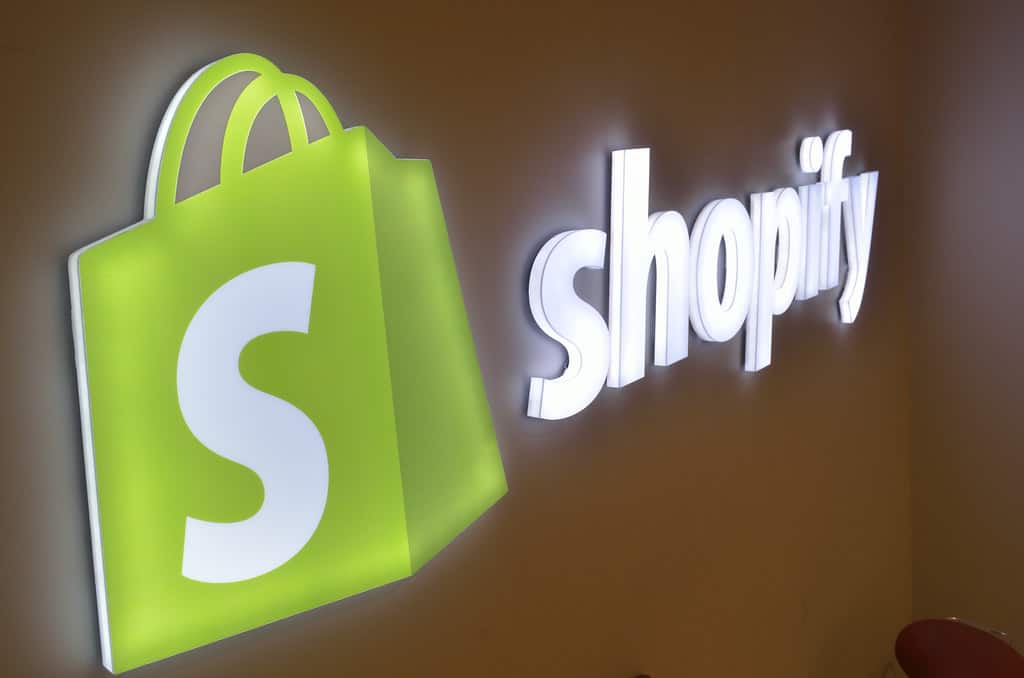Is Shopify cursed?

 Do the math on Shopify (Shopify Stock Quote, Chart, News TSX:SHOP) versus Amazon (NASDAQ:AMZN) and it’s clear which stock has the better valuation. So says portfolio manager Teal Linde who argues Canada’s tech success story is not yet in Amazon’s zip code.
Do the math on Shopify (Shopify Stock Quote, Chart, News TSX:SHOP) versus Amazon (NASDAQ:AMZN) and it’s clear which stock has the better valuation. So says portfolio manager Teal Linde who argues Canada’s tech success story is not yet in Amazon’s zip code.
It’s clear that Shopify has been an investor’s dream (or nightmare, if you’ve been on the outside looking in), with its share price ballooning from about C$190 two years ago to now up over C$1200. That’s a 530-per-cent return in 24 months. The stock has even poked above the C$1400 mark a few times in recent months, although it has trailed off since mid-October.
As with Amazon, Shopify is benefitting from COVID-19-related tailwinds in the e-commerce sector where both businesses and stay-at-home shoppers are relying on Shopify’s online platform to serve their needs.
The evidence was clearly on display at the end of October when Shopify delivered another humdinger of a quarter, coming in with $767.4 million in revenue, almost double the topline of a year earlier and $110 million above analysts’ consensus forecast. Shopify matched that with net income of $191 million or $1.13 per share compared to the Street’s estimate at $0.49 per share. (All figures in US dollars except where noted otherwise.)
“Shopify has become the most valuable company in Canada, surpassing Royal Bank, and there’s an interesting curse for companies that achieve that status. Three of them were Nortel, BlackBerry, and Valeant and they all imploded soon after that.”
By segment, Shopify’s Merchant Solutions revenue growth climbed 132 per cent to $522.1 million while Subscription Solutions grew by 48 per cent to $245.3 million. Gross Merchandise Volume, representing the total dollar value of orders on the platform and related media grew by 109 per cent year-over-year to $30.9 billion.
“The accelerated shift to digital commerce triggered by COVID-19 is continuing, as more consumers shop online and entrepreneurs step up to meet demand,” said Harley Finkelstein, Shopify’s President, in the Q3 press release. “Entrepreneurs will be the force in rebuilding economies all over the world, which makes it even more important for Shopify to innovate and build the critical tools that merchants need to succeed in a low-touch retail environment.”
At the same time, CFO Amy Shapero voiced a note of caution, saying in the conference call that near-term growth could be checked by a number of factors including unemployment and consumer spending along with the general longevity of the pandemic. Shapero said Shopify benefitted from a double cohort effect in the third quarter where monthly recurring revenue grew by 47 per cent as more merchants from both SHOP’s 90-day free trial and 14-day free trial converted into paying subscribers in the Q3, a trend not likely to continue.
“While demand for subscriptions remains higher than pre-COVID levels, we do not expect the year-on-year monthly recurring revenue growth rate in Q4 to match what we saw in the Q3,” Shapero said.
Shopify’s share price has trended downward since the Q3 release, but overall, the stock is still way too hot, according to Linde, manager of Linde Equity Fund, who thinks the numbers speak for themselves.
“For those who bought it early there’s been a fantastic return, but the company’s valuation is really sky high right now,” says Linde, speaking on BNN Bloomberg on Wednesday. “Shopify has become the most valuable company in Canada, surpassing Royal Bank, and there’s an interesting curse for companies that achieve that status. Three of them were Nortel, BlackBerry, and Valeant and they all imploded soon after that.”
“I don’t think that’s going to be the outcome with Shopify. Even though the valuations is [high]. They’re in a massive market and they’re a competitor to Amazon and Amazon’s market cap is $1.6 trillion,” Linde said. “But the difference is that Amazon generates $400 billion in revenues annually and so they’re trading at 4x that at a $1.6 trillion market cap. Shopify is about a $110-billion market cap but it’s got annual revenues of $3 billion.”
“So instead of trading at 4x revenues like Amazon it’s trading something like 35x revenues, and it’s expected to grow at 30 per cent next year. So, I just think that’s an awfully high valuation,” Linde said. “It’s discounting a lot of growth and success, years into the future [but] priced into today. And so I just don’t think that on a fundamental basis you can justify any further upside from its current share price.”
Opinions naturally differ about Shopify’s growth potential, of course. Take National Bank Financial’s Richard Tse, who after the company’s third quarter results kept his “Outperform” rating on the stock along with his $1,250 target, which implied a return at publication date of 25 per cent.
Tse said along with the revenue and earnings beats in the Q3, Shopify is showing an enviable ability to adapt and grow within the ever-dynamic commerce space. That’s a difference-maker, according to Tse.
“Having followed this name for some time, we took away something more qualitative from its quarterly conference call and that’s the Company’s ability to respond quickly which in itself is an endorsement of its operating prowess,” Tse wrote in an October 29 update to clients. “We only point that out as we think that ability to be nimble and respond quickly is one of the most notable drivers of success in this rapidly evolving and competitive market segment and it’s our view that those rapid responses allowed Shopify to harvest outsized value under the current backdrop.”
“That’s important because the potential value we expect to come into the stock will be in the form of initiatives like Shopify Fulfillment Network and Shopify Plus, and we can only credit some value in our target price if we have evidence that they have a record of execution – and so far – as in this and previous quarters – they have which is why we ascribe value to those incremental growth initiatives,” Tse said.



